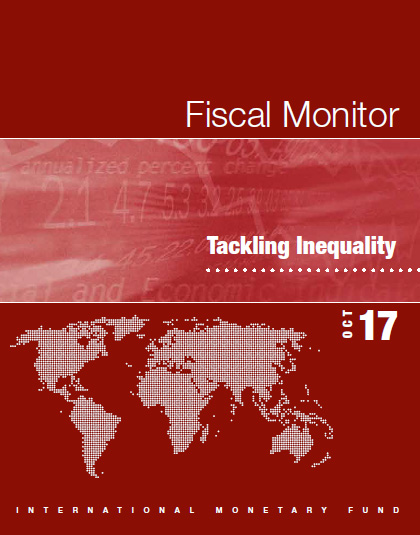 The latest edition of the IMF’s Fiscal Monitor, ‘Tackling Inequality’ challenges conventional wisdom that policies to reduce inequality will also reduce economic growth.
The latest edition of the IMF’s Fiscal Monitor, ‘Tackling Inequality’ challenges conventional wisdom that policies to reduce inequality will also reduce economic growth.
While some inequality is inevitable in a market-based economic system, excessive inequality can erode social cohesion, lead to political polarization, and ultimately lower economic growth.
The IMF looks at three possible policy alternatives to reduce inequality without damaging economic growth
The first is a rise in personal income tax rates for top earners. Since top rates have been cut in most countries, with the OECD average falling from 62% to 35% over the past 30 years, the IMF maintains that there is considerable scope of raising top rates, with the optimum being around 44%. Evidence suggests that income tax elasticity is low at most countries’ current top rates, meaning that a rise in top income tax rates would only have a small disincentive effect on earnings.
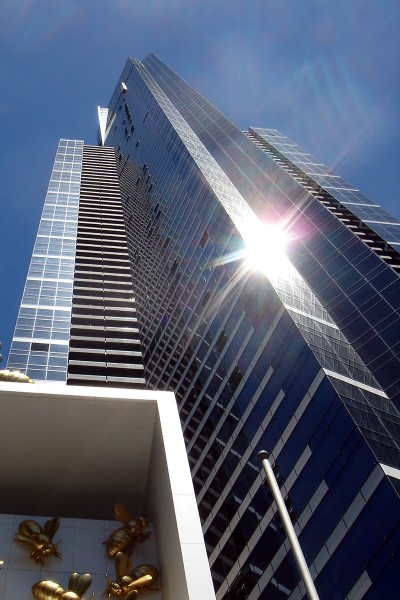 An increased progressiveness of income tax should be backed by sufficient taxes on capital to prevent income being reclassified as capital. Different types of wealth tax, such as inheritance tax, could also be considered. Countries should also reduce the opportunities for tax evasion.
An increased progressiveness of income tax should be backed by sufficient taxes on capital to prevent income being reclassified as capital. Different types of wealth tax, such as inheritance tax, could also be considered. Countries should also reduce the opportunities for tax evasion.
The second policy alternative is a universal basic income for all people. This could be achieved by various means, such as tax credits, child benefits and other cash benefits, or minimum wages plus benefits for the unemployed or non-employed.
The third is better access to health and education, both for their direct effect on reducing inequality and for improving productivity and hence people’s earning potential.
In all three cases, fiscal policy can help through a combination of taxes, benefits and public expenditure on social infrastructure and human capital.
But a major problem with using increased tax rates is international competition, especially with corporation tax rates. Countries are keen to attract international investment by having corporation tax rates lower than their rivals. But, of course, countries cannot all have a lower rate than each other. The attempt to do so simply leads to a general lowering of corporation tax rates (see chart in The Economist article) – to a race to the bottom. The Nash equilibrium rate of such a game is zero!
Videos
 Raising Taxes on the Rich Won’t Necessarily Curb Growth, IMF Says Bloomberg, Ben Holland and Andrew Mayeda (11/10/17)
Raising Taxes on the Rich Won’t Necessarily Curb Growth, IMF Says Bloomberg, Ben Holland and Andrew Mayeda (11/10/17)
 The Fiscal Monitor, Introduction IMF (October 2017)
The Fiscal Monitor, Introduction IMF (October 2017)
 Transcript of the Press Conference on the Release of the October 2017 Fiscal Monitor IMF (12/10/17)
Transcript of the Press Conference on the Release of the October 2017 Fiscal Monitor IMF (12/10/17)
Articles
Higher taxes can lower inequality without denting economic growth The Economist, Buttonwood (19/10/17)
Trump says the US has the highest corporate tax rate in the world. He’s wrong. Vox, Zeeshan Aleem (31/8/17)
Reducing inequality need not hurt growth Livemint, Ajit Ranade (18/10/17)
IMF: higher taxes for rich will cut inequality without hitting growth The Guardian, Larry Elliott and Heather Stewart (12/10/17)
IMF Fiscal Monitor
IMF Fiscal Monitor: Tackling Inequality – Landing Page IMF (October 2017)
Opening Remarks of Vitor Gaspar, Director of the Fiscal Affairs Department at a Press Conference Presenting the Fall 2017 Fiscal Monitor: Tackling Inequality IMF (11/10/17)
Fiscal Monitor, Tackling Inequality – Full Text IMF (October 2017)
Questions
- Referring to the October 2017 Fiscal Monitor, linked above, what arguments does the IMF use for suggesting that the optimal top rate of income tax is considerably higher than the current OECD average?
- What are the arguments for introducing a universal basic income? Should this depend on people’s circumstances, such as the number of their children, assets, such as savings or property, and housing costs?
- Find out the details of the UK government’s Universal Credit. Does this classify as a universal basic income?
- Why may governments reject the IMF’s policy recommendations to tackle inequality?
- In what sense can better access to health and education be seen as a means of reducing inequality? How is inequality being defined in this case?
- Find out what the UK Labour Party’s policy is on rates of income tax for top earners. Is this consistent with the IMF’s policy recommendations?
- What does the IMF report suggest about the shape of the Laffer curve?
- Explain what is meant by tax elasticity and how it relates to the Laffer curve?
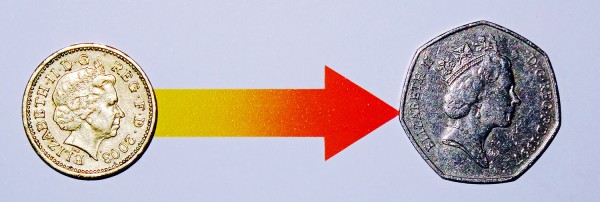 The UK Shadow Chancellor, Ed Balls, has announced that, if Labour is returned to power in the next election, it will bring back the 50% top rate of income tax (see also). This will apply to incomes over £150,000.
The UK Shadow Chancellor, Ed Balls, has announced that, if Labour is returned to power in the next election, it will bring back the 50% top rate of income tax (see also). This will apply to incomes over £150,000.
But will this raise more tax revenue? The question here concerns incentive effects. Will the higher rate of income tax discourage work by those earning £150,000 or encourage tax avoidance or tax evasion, so that the total tax take is reduced? The Conservatives say the answer is yes. The Labour party says no, claiming that there will still be an increase in tax revenue.
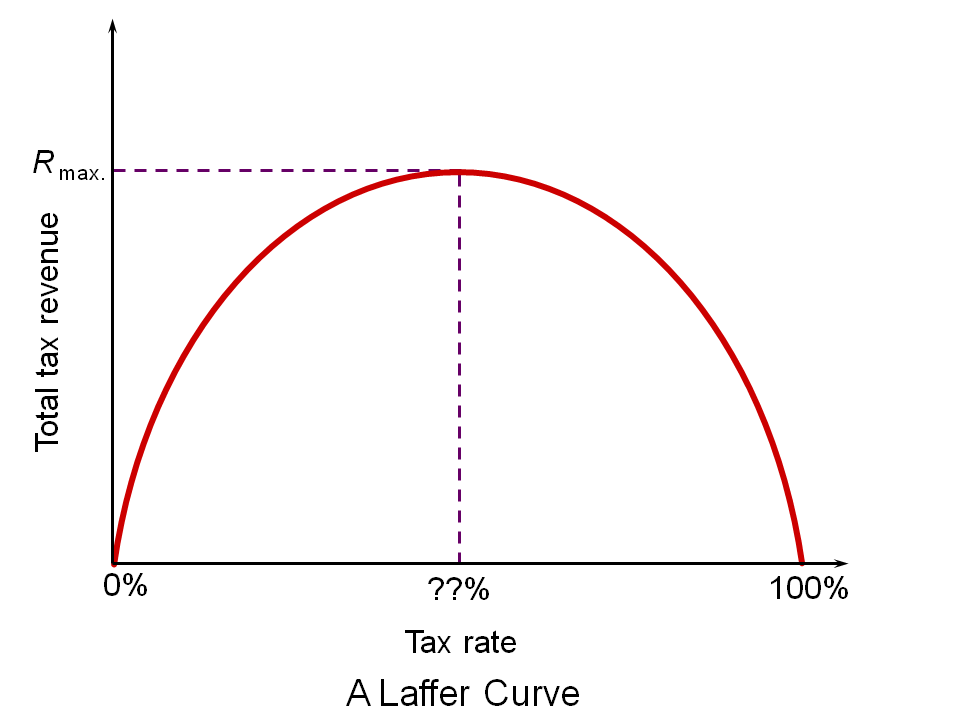 The possible effects are summed up in the Laffer curve (see The 50p income tax rate and the Laffer curve). As the previous post stated:
The possible effects are summed up in the Laffer curve (see The 50p income tax rate and the Laffer curve). As the previous post stated:
These arguments were put forward in the 1980s by Art Laffer, an adviser to President Reagan. His famous ‘Laffer curve’ (see Economics (8th edition) Box 10.3) illustrated that tax revenues are maximised at a particular tax rate. The idea behind the Laffer curve is very simple. At a tax rate of 0%, tax revenue will be zero – but so too at a rate of 100%, since no-one would work if they had to pay all their income in taxes. As the tax rate rises from 0%, so tax revenue would rise. And so too, as the tax rate falls from 100%, the tax rate would rise. It follows that there will be some tax rate between 0% and 100% that maximises tax revenue.
As Labour is claiming that re-introducing the 50% top rate of income tax will increase tax revenue, the implication is that the economy is to the left of the top of the Laffer curve: that, at current level of income, the curve is still rising.
Work by HMRC, and published in the document The Exchequer effect of the 50 per cent additional rate of income tax, suggested that the previous cut in the top rate from 50% to 45% would cut revenue by around £3.5 billion if there were no incentive effect, but with the extra work that would be generated, the cut would be a mere £100 million. This implies, other things being equal, that a rise in the rate from 45% to 50% would raise only a tiny bit of extra taxes.
However, the HMRC analysis has been criticised and especially its assumptions about the incentive effects on work. Then there is the question of whether a rise in the rate from 45% to 50% would have exactly the reverse effect of a cut from 50% to 45%. And then there is the question of how much HMRC could reduce tax evasion and avoidance.
The following article from the Institute for Fiscal Studies examines the effects. However, the authors conclude that:
… at the moment, the best evidence we have still suggests that raising the top rate of tax would raise little revenue and make, at best, a marginal contribution to reducing the budget deficit an incoming government would face after the next election.
But there is also the question of equity. Putting aside the question of how much revenue would be raised, is it fair to raise the top rate of tax for those on high incomes? Would it make an important contribution to reducing inequality? This normative question lies at the heart of the different views of the world between left and right and is not a question that can be answered by economic analysis.
Article
50p tax – strolling across the summit of the Laffer curve? Institute for Fiscal Studies, Paul Johnson and David Phillips (Jan 2014)
Questions
- Distinguish between tax evasion and tax avoidance.
- How would it be possible for a rise in tax rates to generated less tax revenue?
- Could policies shift the Laffer curve as opposed to merely resulting in a move along the curve?
- What is meant by ‘taxable income elasticity (TIE)’? What are its determinants?
- Is the taxable income elasticity at the top of the Laffer curve equal to, above or below zero? Explain.
- Why did the Office for Budget Responsibility chairman, Robert Chote, conclude that, whatever the precise answer, we were ‘strolling across the summit of the Laffer curve’?
- Explain why ‘there is little additional evidence to suggest that a 50p rate would raise more than was estimated by HMRC back in 2012’.
- What contribution can economists make to the debate on the desirability of reducing inequality?
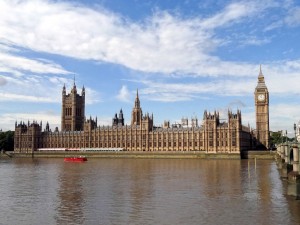 On 21 March, the Chancellor of the Exchequer, George Osborne, delivered the 2012 Budget for the UK. The details of the tax and benefit changes can be found in the Budget Report, with the Treasury’s summary of the tax changes here.
On 21 March, the Chancellor of the Exchequer, George Osborne, delivered the 2012 Budget for the UK. The details of the tax and benefit changes can be found in the Budget Report, with the Treasury’s summary of the tax changes here.
One of the key elements in the Budget was the reduction in the top rate of income tax from 50% to 45% from April 2013. The Chancellor argued that the introduction of the 50% rate in 2010 had raised very little extra tax revenue. Partly this was the result of people managing their tax affairs so that they could bring forward income to the year before the 50% rate was introduced – a practice known as forestalling. People are likely to do the reverse with the latest tax change and delay receiving income until next year. For details of the effects of forestalling, see the Office for Budget Responsibility’s Economic and fiscal outlook charts and tables Box 4.2a.
But part of the reason for the 50% tax rate raising relatively little has been the effect on incentives. A rise in the top rate of income tax can encourage people to move from the country – or move their incomes; it may discourage top earners from working more; it may encourage people to engage in various tax avoidance schemes; it may encourage people to evade taxes by not declaring all their income.
The effect of a rise (or fall) in the marginal income tax rate (t) on taxable income is given by the taxable income elasticity (TIE). This is defined as the proportionate change in taxable income (Y) divided by the proportionate change in the net-of-income-tax rate (r) (where r = 100 – t: i.e. the percentage of an extra pound that is not paid in income tax, but is retained by the taxpayer for spending or saving). TEI is thus ΔY/Y ÷ Δr/r. The larger the disincentive effect of raising taxes, the more will taxable income fall and hence the higher will be the value of TIE.
The Office for Budget Responsibility (OBR) in 2010 based its calculations on a TIE of 0.35 for the rise in the top marginal rate of income tax from 40% to 50%. This means that for each 1% fall in the net-of-income-tax rate, taxable income would fall by 0.35%. With a TIE of 0.35, the OBR calculated that the new top rate would bring an extra £2.9bn per year by 2011-12 (after allowing for any temporary residual effects of forestalling). However, the OBR now believes that the TIE is significantly higher and that the 50% rate will bring only an extra £0.7bn in 2011/12.
In its analysis of the effects of a cut in the top rate from 50% to 45%, the OBR has assumed a TIE of 0.45.
Turning to the costing of the move to 45 per cent, measured against our baseline that reflects the new information on the 50 per cent yield, we have endorsed as reasonable and central the Government’s estimate that the underlying cost would be around £0.1 billion in 2013-14, based on an assumed TIE of 0.45. The figure is as low as this because a TIE of 0.45 implies that the revenue-maximising additional tax rate is around 48 per cent. Moving from just above to just below this rate would therefore have very little revenue impact. Moving the additional rate back to 40 per cent would take it further below the revenue maximising rate and would thus be more expensive at roughly an additional £600 million. But for the reasons set out above we would again emphasise the huge uncertainties here.
Economic and fiscal outlook – March 2012 (p110)
The government’s arguments for reducing the top tax rate, therefore, are that it will have little effect on tax revenue, but would have a significant effect in encouraging inward investment, discouraging emigration of high earners and encouraging high earners to work more.
Articles
Rich tax cuts offset by changes to relief Financial Times, Vanessa Houlder (21/3/12)
Budget 2012: A big debate about small numbers (cont’d) BBC News, Stephanie Flanders (21/3/12)
Budget 2012: End of 50p tax, but 45p rate here to stay The Telegraph, Robert Winnett (21/3/12)
Budget 2012: Top income tax rate ‘won’t go any lower than 45p’ This is Money, Tim Shipman (22/3/12)
Why is tax avoidance a reason for letting people off tax? New Statesman, Alex Hern (22/3/12)
Study: Millionaires Don’t Flee States Due To Tax Hikes Think Progress, Pat Garofalo (22/3/12)
Laffer Curve Fun, with a side serving of nepotism Mark Wadsworth blog (22/3/12)
Budget 2012: are we really all in this together? Guardian, Polly Curtis (21/3/12)
Did the 50p tax rate really raise less than £1 billion in 2010/11? Touch Stone, Howard Reed (22/3/12)
45p: Power beats evidence Stumbling and Mumbling, Chris Dillow (22/3/12)
Reports, documents and presentations
Economic and fiscal outlook – March 2012 OBR
Budget 2012 HM Treasury (21/3/12)
Budget 2012 IFS (March 2012)
The Exchequer effect of the 50 per cent additional rate of income tax HMRC (March 2012)
Can More Revenue be Raised by Increasing Income Tax Rates for the Very Rich? IFS, Mike Brewer and James Browne (2009)
The 50p income tax rate IFS, James Browne (March 2012)
Questions
- What are the arguments for and against reducing the top rate of income tax from 50% to 45%? Do the same arguments apply to a further reduction to 40%?
- According to the OBR, at what top tax rate is the top of the Laffer curve?
- Why are the OBR’s calculations subject to considerable possible error?
- Why might a fall in the top tax rate from 50% to 40% not exactly reverse all the effects of an earlier rise in the top tax rate from 40% to 50%? In other words, why may the effects not be symmetrical?
- Distinguish between the income and substitution effects of a change in income tax rates. Which is assumed to be larger by the OBR in the case of reducing the top rate of income tax from 50% to 45%? Explain.
 The latest edition of the IMF’s Fiscal Monitor, ‘Tackling Inequality’ challenges conventional wisdom that policies to reduce inequality will also reduce economic growth.
The latest edition of the IMF’s Fiscal Monitor, ‘Tackling Inequality’ challenges conventional wisdom that policies to reduce inequality will also reduce economic growth. An increased progressiveness of income tax should be backed by sufficient taxes on capital to prevent income being reclassified as capital. Different types of wealth tax, such as inheritance tax, could also be considered. Countries should also reduce the opportunities for tax evasion.
An increased progressiveness of income tax should be backed by sufficient taxes on capital to prevent income being reclassified as capital. Different types of wealth tax, such as inheritance tax, could also be considered. Countries should also reduce the opportunities for tax evasion. Raising Taxes on the Rich Won’t Necessarily Curb Growth, IMF Says Bloomberg, Ben Holland and Andrew Mayeda (11/10/17)
Raising Taxes on the Rich Won’t Necessarily Curb Growth, IMF Says Bloomberg, Ben Holland and Andrew Mayeda (11/10/17) The Fiscal Monitor, Introduction IMF (October 2017)
The Fiscal Monitor, Introduction IMF (October 2017) Transcript of the Press Conference on the Release of the October 2017 Fiscal Monitor IMF (12/10/17)
Transcript of the Press Conference on the Release of the October 2017 Fiscal Monitor IMF (12/10/17)

